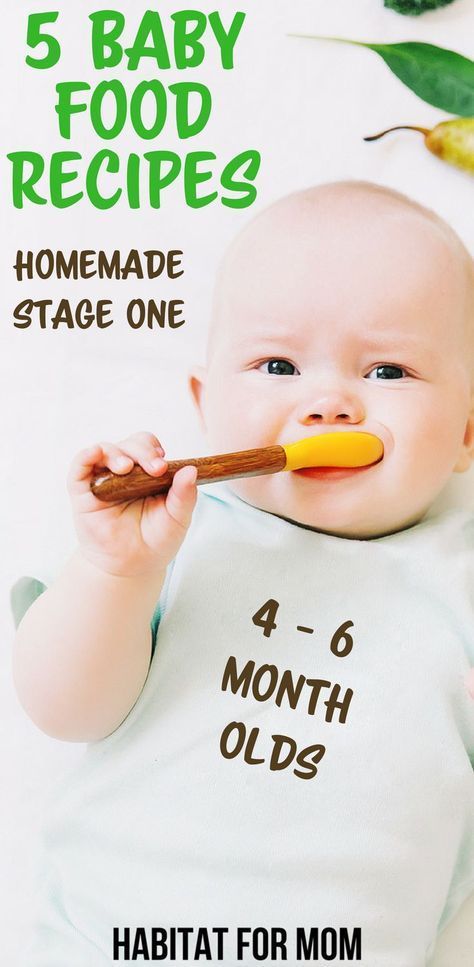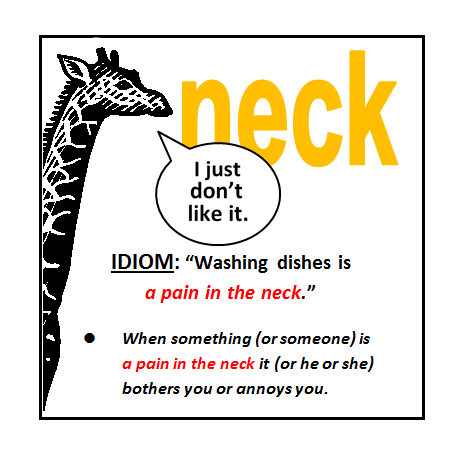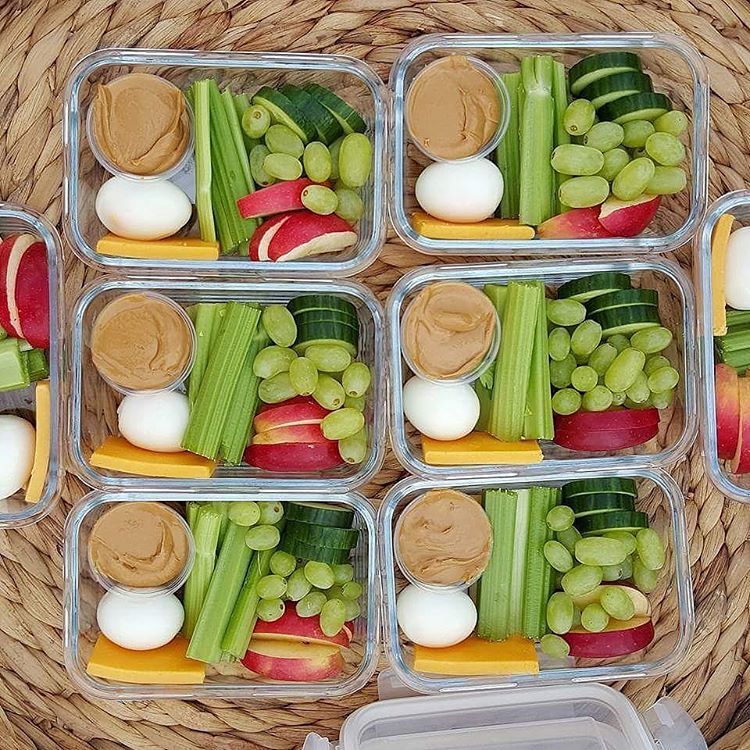Baby leopard gecko feeding
10 Baby Leopard Gecko Care & Feeding Tips for Beginners
Leopard Geckos are one of the most popular pet lizards in captivity, and rightfully so.
They have delightful personalities, simplistic husbandry requirements, and irresistibly cute faces! What’s not to love?
Whether you’re the proud new owner of your own Baby Leopard Gecko or you’re trying to learn as much as you can before you pick up or receive your new pet, you’ve come to the right place.
We’re going to cover the ten most important tips for taking care of and feeding your new Baby Leopard Gecko.
Once you nail down these guidelines, there’s not much more to it – just enjoy and bond with your Baby Leopard Gecko!
In This Article
1. Know What to Expect From Your Baby Leopard GeckoBefore we get into any specific care and feeding tips, it’s best to gain a solid understanding of normal and healthy Baby Leopard Gecko behavior!
For example, did you know that new Baby Leopard Geckos probably WON’T eat for the first week while they’re becoming acclimated to their new surroundings?
Or how about the fact that they eat their skin?! That’s right – if you see your Baby Leopard Gecko biting at itself or gulping down some unknown white, papery substance – it’s likely old skin!
Baby Leopard Geckos shed once or twice every week, and you likely won’t find the evidence.
It’s also expected that you may not see your Leopard Gecko move or explore much unless you’re a night owl.
Leopard Geckos are naturally active after the lights go out, and they tend to hide and sleep for most of the day.
Another reality that you should come to terms with is that Baby Leopard Geckos need live insects to grow and thrive.
You can buy the bugs at the pet store, online, or breed them yourself, but the fact of the matter is that you’ll have to be comfortable with having real crickets, grubs, and even roaches in your home on any given day.
Finally, while you may never encounter this freaky phenomenon, it’s essential to be aware of the fact that startled Leopard Geckos will “drop” their tail!
This is a defense mechanism used to distract predators while they make their escape. Don’t worry; most Leopard Geckos recover just fine and even re-grow their tail.
Now that we’ve covered all of the nitty-gritty potential drawbacks of Baby Leopard Gecko ownership, let’s move on to the more positive points:
- They’re so cute! Especially as babies.

- There are several different morphs you can choose from (Albino leopard gecko is one of the most popular ones)
- Leopard Geckos that are handled often seem to enjoy interacting with humans.
- They stay reasonably small and don’t require a huge enclosure.
- Leopard Geckos don’t require expensive, elaborate set-ups or equipment.
- These friendly little guys rarely bite, and even when they do, it doesn’t hurt.
- Leopard Geckos usually go to the bathroom in one corner of their enclosure, making clean-up and maintenance a breeze.
As we mentioned above, when you bring your Baby Leopard Gecko home, it likely won’t eat for the first week or so.
Your Baby Leopard Gecko will be stressed out from the trip and new sights, sounds, and scents.
The best thing to do during this acclimation period is to leave him or her alone. There’s plenty of time for bonding after your baby has settled in!
We suggest you wait to start handling your Baby Leopard Gecko for at least seven days, or until you know it’s eating and pooping fine – whichever criteria takes the longest.
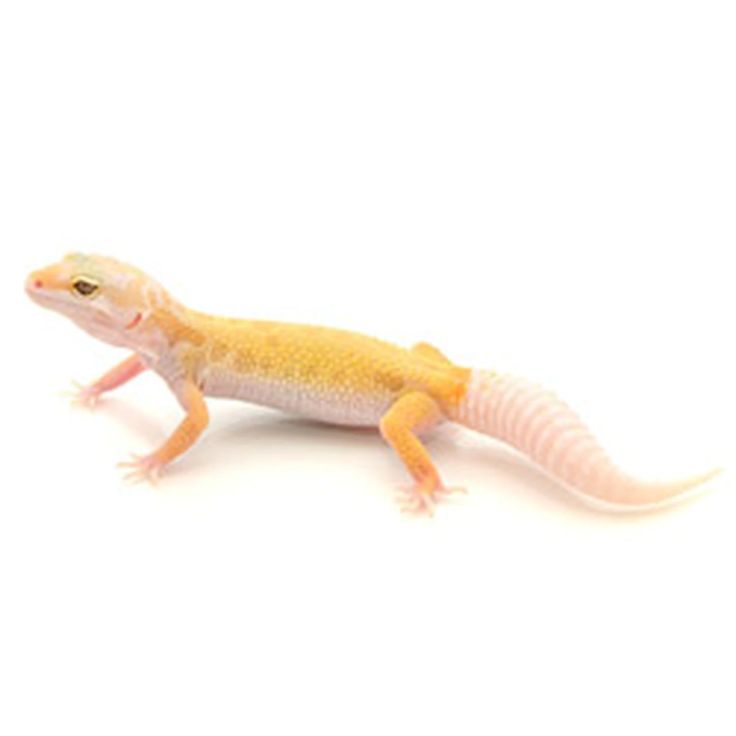
During this time, only open the enclosure to offer fresh water and food (only if it seems to go missing). Try to keep the room somewhat dark and as quiet as possible during this time.
We stress that you should NOT keep adding more bugs every day if they don’t seem to be disappearing. An excessive amount of insect activity in the habitat could stress your baby even more!
When you do start handling your Baby Leopard Gecko, take things slowly. Never try to grab or “catch” your Baby Leopard Gecko if it’s running from you – this could cause it to drop its tail.
While that isn’t a life-threatening situation, you will need to treat the tail base as an open wound, and your Baby Leopard Gecko will need to dedicate its biological resources to regenerating the tail instead of growing.
3. Set Up an Appropriate Enclosure for Your Baby Leopard GeckoYour Baby Leopard Gecko can start in a small 10-gallon aquarium or a plastic bin with at least 1. 25 square feet of floor space.
25 square feet of floor space.
Inside the enclosure, you should provide:
- At least three hides: one on the warm side, one on the cool side, and one humid hide.
- A shallow water dish that your Baby Leopard Gecko can’t drown in
- Rocks, logs, plants, and aquarium or terrarium decor, as desired.
Once your Baby Leopard Gecko reaches adulthood, it will need an upgrade to an enclosure with at least 2.5 square feet of floor space, like a 20-gallon long aquarium.
You should use a securely-locking lid on your Baby Leopard Gecko’s enclosure.
While they’re terrestrial and can’t climb glass, many crafty young geckos have devised ways to climb corners and terrarium decorations to reach the open top and escape.
Baby Leopard Geckos benefit from UVB lighting, but it’s not required.
If you don’t use a UV bulb over your Leo’s habitat, be sure to supplement their diet with calcium powder that includes Vitamin D3.
If you use lighting, be sure to hook up a timer set for 12 hours on and 12 hours off.
Finally, your Baby Leopard Gecko is going to need supplemental heat to digest its food and stay healthy.
4. Set Up a Temperature Gradient in Your Baby Leopard Gecko’s EnclosureAll captive reptiles benefit from a temperature gradient in their enclosure.
Creating a temperature gradient involves heating one side of the enclosure to a maximum ideal temperature; the hottest area on this side of the enclosure is known as the “basking spot.”
The temperature will gradually fall to a minimum ideal temperature on the other side of the enclosure, known as the “cool side.”
The middle of the enclosure should fall somewhere between the maximum and minimum ideal temperatures.
This temperature gradient allows your Leopard Gecko to control its own body temperature by using its environment, which is what ectothermic animals evolved to do.

| Baby Leopard Gecko Temperature Summary | |
|---|---|
| Basking Spot Temperature: | 90-95°F |
| Warm Side Ambient Temperature: | 80-90°F |
| Cool Side Ambient Temperature: | 70-80°F |
| Optional Nighttime Temperature Drop: | 60-74°F |
You can provide heat using any of the following depending on what works best for your set-up:
- Halogen light bulb
- Ceramic heat emitter
- Carbon filament heat projector
- Deep heat projector
- Heating cable
- Heating pad
- Reptile heat tape
Always use a thermostat when operating any heating element to mitigate risks like a house fire or overheating and killing your reptile.
At night, you can likely turn off all heating elements. Research indicates that ectothermic animals benefit from a drop in temperatures at night.
Many new Leopard Gecko owners may be tempted to use “reptile sand” that’s often explicitly marketed for Leopard Geckos.
The scary truth is that most commercially available “reptile sand” is very dangerous for your Baby Leopard Gecko.
Numerous Baby Leopard Geckos have passed away after ingesting too much of their loose substrate while hunting.
Unfortunately, the sand can cause an intestinal blockage, which is a death sentence. Sometimes surgery has been a successful treatment option, but even that comes with its risks.
Most Leopard Gecko veterans recommend these types of substrates to new Baby Leopard Gecko parents:
- Paper towels, non-glossy newspaper, or butcher block paper
- Tile
- Reptile sand mat
- Shelf liner
When your Baby Leopard Gecko grows up, you may want to consider one of the safe particulate substrates available because they are visually appealing and allow your gecko to dig and forage.
Babies are fragile and clumsy and are best kept on a solid substrate until they grow up.
6. Create a Humid Hide for Your Baby Leopard GeckoEven though Leopard Geckos are desert-dwelling critters, they need access to a humid hide in captivity to help with shedding.
In the wild, Leopard Geckos are able to create burrow systems that give them access to pockets of high humidity in the ground.
These high-humidity retreats are necessary for healthy hydration levels and shedding processes in Leopard Geckos.
You can replicate this in captivity by filling a hide with damp sphagnum moss or paper towels. Check the media daily for moisture, and add more water as necessary.
Replace the paper or moss if it’s been soiled on or shows any sign of mold growth. Otherwise, replace the medium and clean the hide at least once a month.
Situate the humid hide closer to the warm side of the habitat.
As far as the actual hide, you can use anything from a faux rock cave from the pet store to a Tupperware container with an entry hole cut out.
It needs to be 2 to 3 times the size of your Baby Leopard Gecko’s body. Enclosed hides will hold onto humidity better than bottomless hides.
8. Feed Your Baby Leopard Gecko the Proper Insect VarietyIt may seem easier to just stick with one type of insect for your Baby Leopard Gecko’s entire life, but imagine how you would feel if you had to eat the same thing every day!
Feeding your Baby Leopard Gecko a variety of prey items has many benefits, including:
- Mental enrichment from new appearance, scent, movement pattern, taste, and texture.
- Broader coverage of micronutrients. What vitamin one bug may be lacking in, another type may be full of.
- Avoidance of a “picky eater.” What are you going to do if your Leopard Gecko only eats crickets, but there is a cricket shortage?!
Aim to feed a lot of insects that are considered “high-calcium,” such as:
- Black soldier fly larvae
- Earthworms
- Isopods
- Roaches
- Hornworms
- Silkworms
These insects are also suitable as main food items, as long as you gut-load them and coat them with supplemental calcium:
- Crickets
- Mealworms
- Farm-raised grasshoppers
Here are some more commonly-available insects that may be fed as a treat or to help a sick Baby Leopard Gecko gain weight.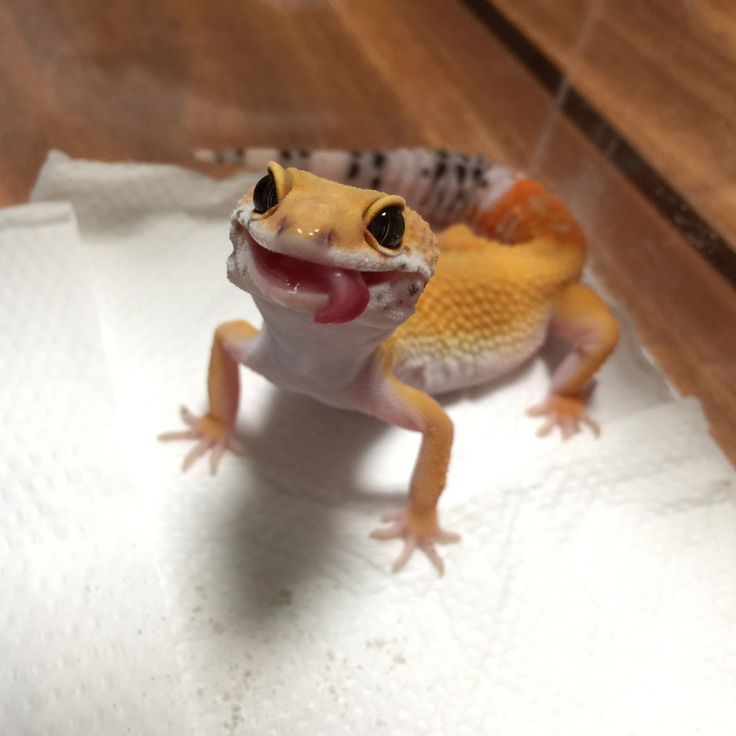
- Giant mealworms
- Superworms
- Butterworms
- Waxworms
All of the above are high in fat, so they shouldn’t be offered regularly:
7. Feed Your Baby Leopard Gecko the Proper Insect SizeInsects that are too small may not trigger your Baby Leopard Gecko’s hunting instincts whatsoever or may cause your gecko to burn more calories “hunting” than it would gain back by eating the prey.
Insects that are too large can cause swallowing and digestion issues, potentially leading to throat injuries, intestinal impaction, and other problems.
They also may intimidate your Baby Leopard Gecko, and uneaten insects (especially large ones) pose a risk of chewing on your fragile gecko!
The ideal feeder insect size is about as long as your Baby Leopard Gecko’s head or shorter than the distance between its eyes.
Generally speaking, hatchlings will eat ⅜” insects, juveniles will eat ¼” insects, and adult Leopard Geckos will eat ½-¾” insects.
Baby Leopard Geckos should eat every day unless they are stressed or otherwise sick.
The general rule of thumb is to feed one appropriately-sized insect per every inch of your Leopard Gecko’s body, or as many insects as they will eat in 15 minutes.
Baby Leopard Geckos usually don’t become overweight, but if you notice that its tail is getting thicker than its neck, you should cut back on the number of insects you’re offering or switch to an insect with lower fat content.
10. Use Supplements With Your Baby Leopard Gecko’s FoodYou should dust your Baby Leopard Gecko’s food with supplement powders and gut-load the feeder insects, if possible
You can use commercial high-calcium insect diets or fresh high-calcium vegetables to gut-load:
- Roaches
- Crickets
- Isopods
- Superworms
Most other feeder insects are difficult or impossible to gut-load, so they’ll need a healthy dusting with reptile-safe calcium powder
If you’ve equipped your Baby Leopard Gecko’s habitat with a UVB lighting system, be sure to buy calcium powder without added Vitamin D3.

Follow the manufacturer’s guidelines for replacing the UVB light bulb. They continue to emit light long after the UV-emitting component “dies.”
If your Leopard Gecko doesn’t have access to UV light, buy reptile calcium powder with added Vitamin D3, but less than 25,000 IU/kg.
The amount can be found on the package’s label; it varies drastically from one brand to another.
You should dust all non-gut-loaded feeder insects with calcium powder and add calcium powder to gut-loaded insects every 2nd or 3rd day.
Baby Leopard Geckos also need a reptile multivitamin.
Dust their prey with the multivitamin powder once per week.
Your efforts to provide a balanced diet and proper care will substantially increase your leopard gecko’s lifespan and its quality of life.
Just pick up a new baby leopard gecko but have no idea how to name him/her? Click to see our top 70+ best leopard gecko names here.
How to Take Care of a Baby Leopard Gecko (First-Time Owner's Guide)
While some people love cuddly pets like cats and dogs, others need something less high-maintenance. Leopard Geckos are one of those oddly adorable pets that are much easier to take care of and for some people, just as rewarding.
If you have decided to adopt a baby Leopard Gecko for the first time, this is the guide for you. You might be a proud new owner or trying to glean as much knowledge as you can before you adopt one. Either way, we’ve got you covered with everything that you need to know about setting up your leopard gecko’s new home, how to feed them, and the quality time that they might need.
Leopard Gecko Facts
Leopard geckos belong to the genus Eublepharidae. Unlike most geckos, these remarkable creatures have moveable eyelids, but they don’t have toe pads like other species. That means that a leopard gecko can’t climb up smooth surfaces.
Don’t be surprised if your leopard gecko frequently sheds their skin. It is a positive and natural thing for them to do. They shed their skin as a survival mechanism to stop their scent from being picked up by predators.
It is a positive and natural thing for them to do. They shed their skin as a survival mechanism to stop their scent from being picked up by predators.
Leopard geckos are native to the dry, semi-desert areas throughout the Middle East in countries like Afghanistan, Iran, Iraq, and northern India. They are hardy reptiles and can live for more than 20 to 30 years when you care for them properly.
Leopard geckos are one of the few kinds of reptiles that like to be handled, especially if they have grown up around humans and with human contact. That, combined with their lifespan, means that you can have a cuddly, reptilian friend for most of your adult life.
That said, adopting a baby leopard gecko is quite a commitment. Be prepared for the long haul so you can give your gecko a good and stable life.
Image Credit: Vibe Images, ShutterstockAre Leopard Geckos Good Pets?
Leopard geckos are considered babies for their first year of life. They develop quickly throughout this year.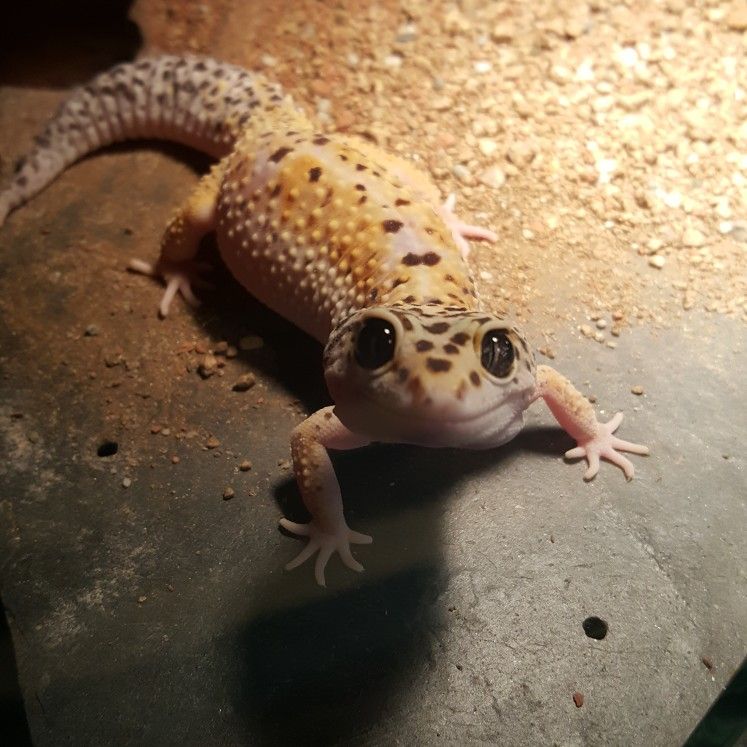 They can start breeding at around 12 months of age, but they shouldn’t yet for their continued health.
They can start breeding at around 12 months of age, but they shouldn’t yet for their continued health.
Leopard geckos are generally considered to be one of the best pets when it comes to adopting a reptile. They are easy to care for and cultivate a positive and gentle relationship.
Leopard geckos are typically quite docile and happy creatures. They also happen to be one of the prettiest geckos. The more you interact with them, the friendlier they will be as they age, yet they don’t require a vast amount of your time each day.
Where Can I Get a Baby Leopard Gecko?
You can buy leopard geckos from almost any pet store that sells reptiles. If you don’t have such a pet store close to you, you can also order them online or work with a smaller, local pet store to have them delivered.
You might also be able to find leopard geckos from a local breeder. Some people who have owned leopard geckos for a long time might casually breed them as well. It is worth googling in your area to see if anyone breeds them locally.
How Much Does It Cost to Own a Leopard Gecko?
The initial cost to adopt a baby leopard gecko will cost anywhere from $30 to $100. Their price typically depends on their morph, the color, and pattern base on their skin.
Besides adopting the leopard gecko themselves, you will also need to purchase a glass tank sized between 10 to 20 gallons. You can also use plastic terrariums for very young, newly hatched geckos. However, it is best to give them a large enclosure that they can grow into so they grow well.
You can get a new or used tank, which will significantly affect the price. They can vary from $10 to $200, depending on their quality and size.
You will also need to get a substrate for the bottom of their cage and a light that will maintain the heat of their environment. This will generally cost around $50 to $100. Finally, you will need to feed them a regular diet of insects that you can typically buy from any pet shop.
The leopard geckos diet is normally not that expensive, costing around $10 to $20 a week, particularly if you purchase in bulk.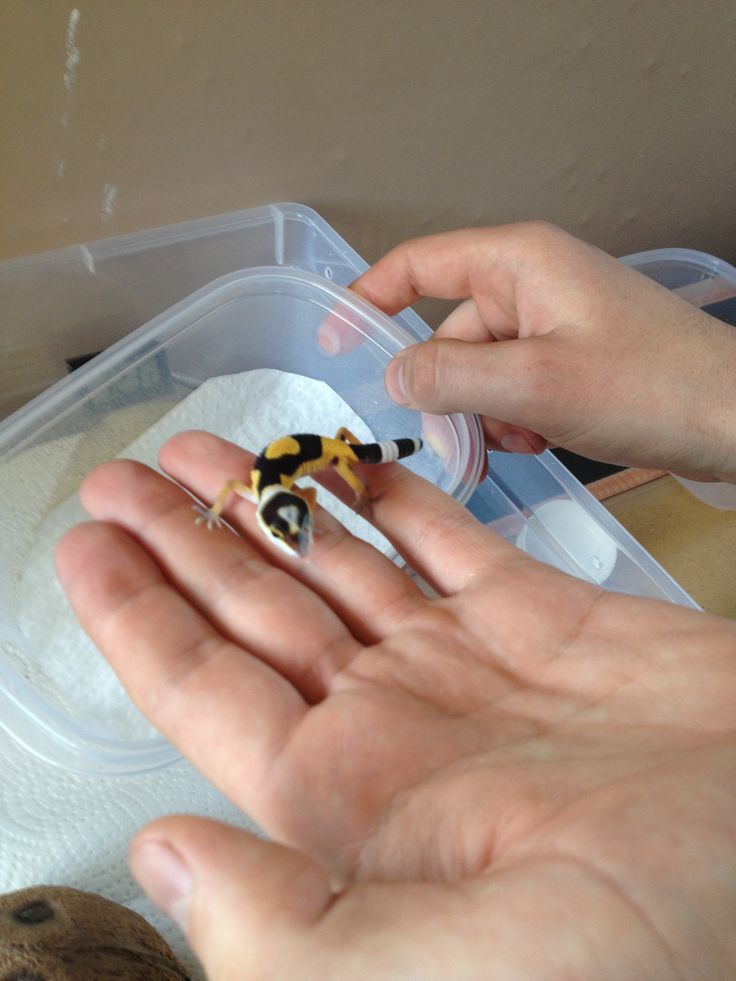
- Related Read: Why Is Your Leopard Gecko Not Eating? 9 Possible Solutions
What Kind of Home Does My Baby Leopard Gecko Need?
A baby leopard gecko can have a small plastic terrarium to live in a smaller, less overwhelming space as they grow into their first few months. However, it isn’t necessary if you want them to move into their final home.
A leopard gecko should have a glass terrarium. If you only have one, you can have a 10-gallon glass tank. If you think that you will end up with more than one leopard gecko, though, you should go with a gallon tank from 15 to 20 gallons. It is wisest to only pair leopard geckos of approximately the same age, since some adults will eat baby geckos.
You need to fill the tank with the right substrate and habitat pieces so your gecko can have things to hide under and play around with. There are all kinds of substrates that work for leopard geckos, including reptile carpet, which stops them from digesting it when they try to catch their prey. You can also line the bottom of their enclosure with paper towels, tiles, or newspapers.
You can also line the bottom of their enclosure with paper towels, tiles, or newspapers.
Avoid substrates like small pebbles and sand, even though this might be what’s around in their natural habitats. These can cause impaction if not appropriately handled.
Lighting and heating are the most important aspects of a leopard gecko’s enclosure. They need a strict temperature setting for them to live a happy, long life. You can provide the necessary heating and lighting using a heat lamp. Don’t forget to simulate day and night cycles of around 12 hours instead of leaving the light on all the time.
Generally, the air temperature in their cage should be between 77 and 85 degrees Fahrenheit. The hot side of your reptile’s tank should be around 85 to 94 degrees, and the cool side should be around 70 degrees Fahrenheit.
To keep your leopard gecko comfortable and give them their own time, you should put in tank accessories. These include things like hidey-holes and basking platforms. You can also add small, non-poisonous plants and other natural additions, like rocks.
You can also add small, non-poisonous plants and other natural additions, like rocks.
What Should I Feed My Baby Leopard Gecko?
A leopard gecko enjoys a varied diet even as a baby. You can feed a baby leopard gecko essentially the same diet as an adult leopard gecko. They are happy to eat crickets and mealworms as staple foods. From there, you can vary their diet by supplementing super worms, wax worms, silkworms, and hornworms.
Beyond their typical diet, leopard geckos will also need a vitamin supplement after each meal that they consume. Giving them this is especially important for baby leopard geckos. Without it, they might not develop properly and won’t have a strong skeletal structure.
Calcium deficiency is the primary thing that you have to watch out for in your gecko’s diet. Supplement their food with calcium powder, and you shouldn’t have to worry about it.
How Do I Take Care of My Baby Leopard Gecko?
Baby leopard geckos should get a meal every day. They grow rapidly during their first 6 months. After their first year, you only need to feed them every other day.
They grow rapidly during their first 6 months. After their first year, you only need to feed them every other day.
A good rule of thumb for how much to feed them is to give them two insects per meal for each inch of their length. It’s best to do this later in the day because this is the time when they are the most active.
Beyond feeding, you also have to be aware that they will shed every 5 to 7 days after they hatch for the first month. After that, they will shed at least once every 1 to 2 weeks until they become adults.
You can tell that your baby leopard gecko will shed, as their colors will become quite dull. After that, the skin separates and turns white. Once it sheds, they won’t waste the nutrients in the skin and will eat it.
When it comes to handling your baby leopard gecko, you will want to wait at least 2 weeks before you begin taming and handling them. They need to get used to their new home first.
Wait to hold your baby gecko until they begin to eat.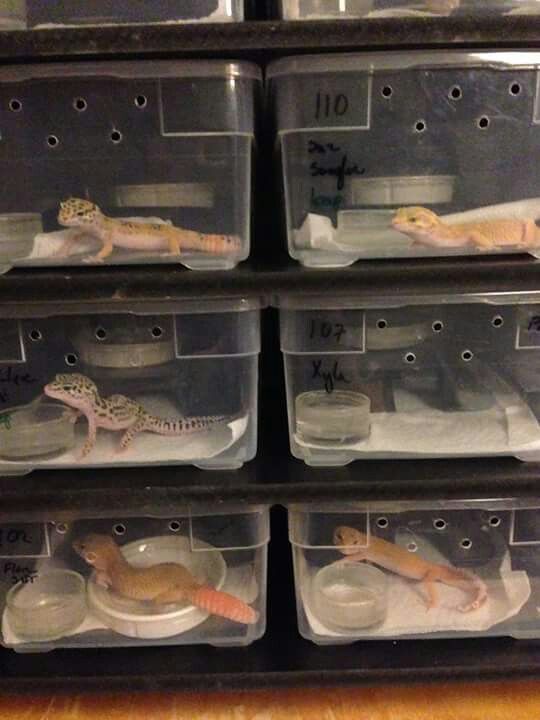 Take the initial handling in steps. Allow them to get used to you by putting your hand in their tank in the evening but not trying to touch them. Work up to letting them climb on your hands.
Take the initial handling in steps. Allow them to get used to you by putting your hand in their tank in the evening but not trying to touch them. Work up to letting them climb on your hands.
How Do I Know If My Baby Leopard Gecko Is Sick?
Although leopard geckos are hardy, they are more vulnerable when they are babies. Before you bring a baby leopard gecko into your home, you should educate yourself on how they might fall ill if not cared for properly.
Calcium deficiency is the most dangerous possibility for a baby leopard gecko. You should gut-load insects or dust them with vitamins and mineral supplements so your gecko can absorb everything that they need for proper development.
Another life-threatening disease that is common in baby geckos is gastrointestinal (GI) impaction. The lizards accidentally eat bits of sand when they hunt their insects. Gradually, that sand builds up in their GI tract until it becomes obstructed.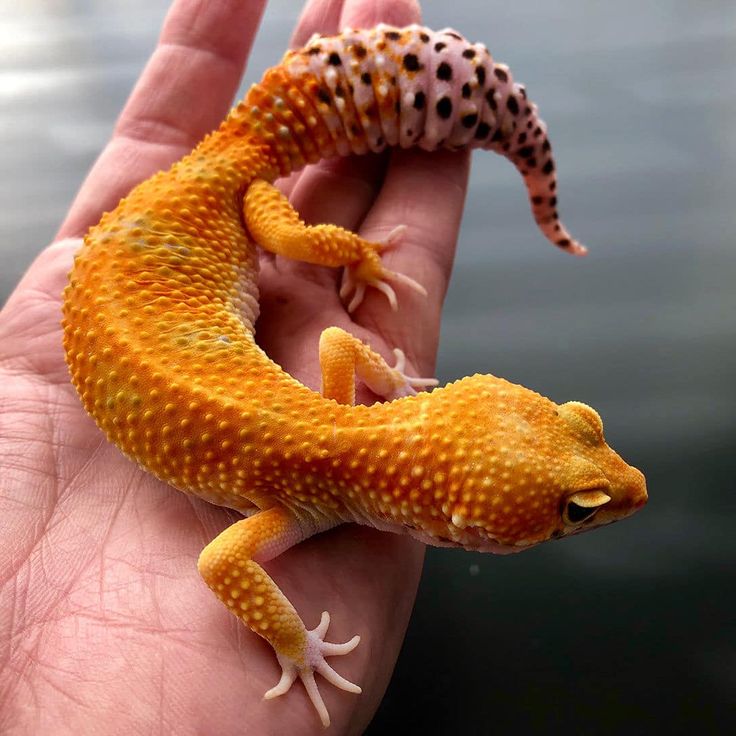 Eventually, your pet will stop eating and will strain to pass stool.
Eventually, your pet will stop eating and will strain to pass stool.
Another disease for baby geckos is the retention of shedding skin. Instead of growing out of their skin, they get dehydrated and can’t shed their skin. This typically happens because of a lack of humidity. When they can’t shed their skin, they will quickly lose weight, stop eating, and eventually, die.
If you notice any of these symptoms, you should immediately take your gecko to the vet. Most of these can be reversed up to a certain point. If left for too long, your gecko could die, and the result can happen surprisingly fast.
Conclusion
Taking care of a baby leopard gecko involves a learning curve. However, once you figure it out, you will have many happy years with an adorable pet that enjoys spending plenty of time with you.
Featured Image Credit: agus fitriyanto suratno, Shutterstock
How to deal with picky eaters - feeding geckos
LEOPARD GECCO - Gecko
"What should I do with picky eaters?" You have a leopard gecko who is a picky eater and you are looking for advice on how to get a leopard gecko to eat. In this article, we will look at several ways to help your gecko start eating. Over the years, we have found several tricks that can help you get started feeding your gecko quickly. These are by no means guaranteed methods, as your results may vary. But it doesn't hurt to try. nine0003
In this article, we will look at several ways to help your gecko start eating. Over the years, we have found several tricks that can help you get started feeding your gecko quickly. These are by no means guaranteed methods, as your results may vary. But it doesn't hurt to try. nine0003
In this article, we assume that your gecko is healthy and your conditions are good. We also assume that your gecko is not going through breeding season or sexual maturity.
Eviscerating mealworms helps get young geckos to eat. You want them to eat because some babies will die or develop metabolic bone disease (MBD) if they don't start eating. Here's a method we've found that really helps kickstart a baby's feeding instinct. nine0003
You take a mealworm and cut it open just enough to show some of its insides. Then you take a feeding tong and wiggle it in front of a gutted mealworm baby. At first, the little gecko may be afraid. But as soon as he licks it, he gets a taste of the guts, and that's usually enough to trigger the gecko's feeding instinct.
We have seen baby geckos ignoring a bowl full of mealworms for several days. But once they've tasted the guts of a gutted mealworm, fed with tongs at least once, they'll start eating on their own. It is very important for hatched geckos/juveniles to eat well on a regular basis because they need to be healthy and grow well. nine0003
Crickets evoke the hunting instinct
For some picky eaters, crickets are the best choice. When the crickets run it really kicks off the hunting instinct of the leopard gecko. Personally, we don't like dealing with crickets because of the noise, the smell and their short lifespan. But they do work for some geckos that don't eat mealworms and super worms.
Zofobas as a last resort
When you've exhausted all your strength and the leopard gecko is still not eating, it might be time to try zofobus. Zofobus for eublefars is like candy. They are very high in fat, so you should never give them as a staple food. You should only buy a small amount to see if you can get the gecko to eat.
You should only buy a small amount to see if you can get the gecko to eat.
Vitamins and calcium with D3.
When it comes to feeding geckos, variety is key. This is very important, no matter which insects you choose to feed, you must supplement with vitamins and calcium with D3. nine0003
Other similar entries:
What to feed gecko - feeding the gecko at home, keeping and caring for lizards
Geckos love tasty food. They quickly get used to treats and may refuse healthy and healthy food. To prevent this from happening, you need to include a variety of dishes on the menu and adhere to the feeding regimen. We tell you how to do it.
Feeding objects
Gecko food objects are divided into basic and additional. The main ones should be in the lizard's diet from birth. Additional food items include treats that can be added to the diet after the pet is six months old. nine0003
Geckos feed on insects and do not refuse newborn naked mice. It is advisable to give your pet live food so that the instinct of the hunter does not disappear. If you choose this option, then remember that you also need to take care of keeping insects at home. They must be full and active.
It is advisable to give your pet live food so that the instinct of the hunter does not disappear. If you choose this option, then remember that you also need to take care of keeping insects at home. They must be full and active.
Another way is to feed frozen food. In this case, it is enough to store food in the freezer, and defrost it immediately before feeding. If the food has lain at room temperature for about 2 hours, it will have to be thrown away. You can not freeze insects again. nine0003
Menu
At home, the gecko should eat the same way as in the wild.
Ration
The main menu should include:
- crickets;
- cockroaches;
- locust;
- grasshoppers;
- earthworms;
- butterflies, moths, moths.
You don't have to choose just one. A mono-diet can lead to beriberi and metabolic disorders. If it is not possible to diversify the diet, use ready-made feed additives. They contain the components necessary for proper development. nine0003
They contain the components necessary for proper development. nine0003
Where can I get food?
Food and vitamins for reptiles can be ordered in the online store. To grow food yourself, get a separate terrarium for it. Do not feed hungry insects to your lizard, as they bite and can feed on your pet's feces, which will negatively affect his health.
We do not recommend getting food for the gecko on the street. Together with wild insects, chemicals, helminth eggs, poisons of larvae, etc., can enter the body of reptiles. nine0003
Which food should I choose?
Crickets and cockroaches are the main diet of the lizard. Their share is about 70%. The remaining 30% are treats. For example, spotted leopard geckos love tobacco hawk caterpillars, mealworms, silkworm larvae, etc. Periodically change treats to create conditions close to the wild.
40 g x 2 pcs 40 g x 24 pcs Show all offers Show all offers
Power features
Feeding time depends on the type of lizard. Some are active at night, others during the day. For example, geckos hunt at dusk, at night and at dawn, so they prefer to eat early in the morning or late in the evening. By the same principle, feed currents, striped, viper geckos, etc.
Some are active at night, others during the day. For example, geckos hunt at dusk, at night and at dawn, so they prefer to eat early in the morning or late in the evening. By the same principle, feed currents, striped, viper geckos, etc.
Frequency
Geckos have a good appetite. In their natural habitat, they eat any prey that they manage to catch. Do not overfeed - reptiles have slow digestion. It is important that before the next feeding they have time to digest the previous portion. Young lizards need to be fed more often than adults. nine0003
There are two approaches to feeding:
- 1 time in 3-4 days for 5-7 large insects. So the reptile will definitely not overeat, but will remain a little hungry.
- 1 time in 2-3 days, but until full, until the pet refuses to eat.
Babies under 2 months old need daily meals.
How to understand that the gecko is full and happy? Rate his behavior. The pet must be nimble during the period of activity. After overeating, lizards become passive, they have problems with the liver, reproductive system. The state of the pet is easy to determine by the tail. In starving geckos, it is thin, in overeating geckos it is large and interferes with walking. With proper nutrition, the tail looks natural in relation to the body, as in the photo below. nine0003
After overeating, lizards become passive, they have problems with the liver, reproductive system. The state of the pet is easy to determine by the tail. In starving geckos, it is thin, in overeating geckos it is large and interferes with walking. With proper nutrition, the tail looks natural in relation to the body, as in the photo below. nine0003
Portion sizes
Portions depend on the age and size of the geckos. For a miniature adult animal, 2-3 large crickets are enough. A large lizard needs to eat 10-15 of the same insects. Newborn animals are fed from the 4th day of life 1-2 times a day with small crickets. After 12 months, the cubs switch to a common diet.
Choose the right food. Do not give the animal an insect that is too large for it, which is difficult to digest. We recommend that you follow a simple rule: the length of the insect should not be more than the distance between the eyes of the gecko. nine0003
Conditions
Lizards feel more alert if they can hunt. To create such conditions for them, purchase a terrarium with a tight-fitting lid. Then the crickets, cockroaches and moths will stay inside. But the gecko can live peacefully without hunting. Simply feed it defrosted insects with tweezers. The animal will be interested in such food.
To create such conditions for them, purchase a terrarium with a tight-fitting lid. Then the crickets, cockroaches and moths will stay inside. But the gecko can live peacefully without hunting. Simply feed it defrosted insects with tweezers. The animal will be interested in such food.
What can not be fed to individuals?
Geckos should not be fed anything that they do not eat in nature. Vegetables, fruits, yoghurts, berries and similar foods are not suitable. nine0003
Reptiles are not given dead insects. The latter are densely fed and frozen alive. A hungry cricket or cockroach is useless for a lizard. For the same reason, moulting crickets should not be given to an animal - they are always empty. They are easily recognizable by their white color.
Insects that glow in the dark are not suitable for food. These are fireflies and lightning beetles. A chemical that is toxic to geckos is responsible for the glow.
What must be in the diet? nine0044
Mineral and vitamin supplements should not be excluded from the menu. The first contains calcium. The gecko is happy to use it in the quantities needed for growth and healthy molting. Pour the powder into a small bowl and place on the floor of the terrarium.
The first contains calcium. The gecko is happy to use it in the quantities needed for growth and healthy molting. Pour the powder into a small bowl and place on the floor of the terrarium.
Vitamin supplements must be dosed. They are dry and liquid. Dry roll a few crickets 1-2 times a week. For pregnant females, slightly increase the portion. Liquid vitamin complexes can be applied to the eyes or the tip of the pet's nose. It is convenient to do this with a soft brush. The animal licks the drops. nine0003
The gecko needs clean and fresh water. Place a small bowl at the bottom of the terrarium. Rinse and refill daily. Some individuals like to swim, especially in the heat. Many reptiles stomp in the bowl and then walk around on the mineral feed. Water can be sprayed on the walls of the terrarium. Your pet might enjoy licking the drops off the glass.
Show all offers
Important to know
Proper nutrition of a gecko depends not only on food, regime and conditions.



